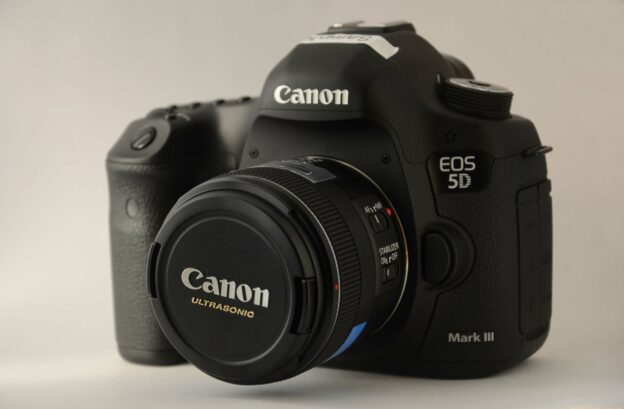
Author Archives: Administrator


Children Fashion Photography Tips
Fashion photography for adults and teenagers are so common these days as the number of photographers and models are rising every time. How many amazing fashion photographs, how many images are used for advertisements surround us at every place. But what if we say that adult fashion photography will soon have a large and powerful rival? Sounds awkward right? but nowadays children fashion photography is becoming more and more in supply. What is the reason for such demand and what does the future hold for this recently appeared genre?
About Children Fashion Photography
Surprisingly, but children fashion photography is not a new genre in the fashion photography industry. These days, children are as serious chic as adults with the growing number of social media pages of children as you will notice. Also modern parents have zero issues with the taste of children’s clothing. Shops and online stores are full of fashionable clothes that make children look quite modern and fascinating. Almost all modern parents try to follow all trends with their children. And modern clothing market has already understood this drift and engages children into fashion advertisements. That is the how this genre is growing a great demand in industry.
The majority of children fashion photography has been made due to the work of fashion designers. Modern world creates fortunate and pleasing conditions for creating clothing collections not only for adults, but for kids too. They know that a lot of fashion models, who have kids now, are not eager to give up the current trend and they try to engage their children in it. The most fastest mode to buy clothing is on online stores, but the only difficulty with online stores is that we only have access to images and nothing else. Believe us that it is easier to choose clothes with images of children models rather than with adult models. And here again we come to a great demand of kids fashion photography.
Before learning about children fashion industry, let us learn out what does it mean to be involved in fashion industry. What is it and what mystery does it hold? So, fashion photography as a special genre of photography entered the market in the 90’s. At this time, this genre manages to win a great part of the market due to a unvarying interest of customers. From the start of 20’s fashion photos began to beat graphics in printing editions of that time. And at the same time, the idea of a fashion photojournalist made an appearance in industry, and since then they work together like a pair that cannot be divided. Hence now there are very less advertisement without photos done in fashion style.
Fashion Photography of present days majorly means images of clothes and accessories of different fashion houses, capturing images during fashion week shows and much more. Due to a huge mixture of required pictures, adult fashion photographs cannot fulfill the whole market needs. And that is how children fashion photography is highly competitive now.
For sure, the demand of fashion images
has changed over years and is still changing. A lot of things has
changed, and today the picture shot by the photographer is of bigger
value than just capturing particular details such as clothes,
hairstyle, accessories and make-up.
Tips to shoot Children Fashion Photography
-
Have Patience
When capturing children you need to be highly patient. This is because that sometimes you may get a amazing bunch of images and sometimes you will get nothing for a while. This is because of the different behavior of the child and this might cause an break in your photography session. So, this is the basic rule that you need to follow while capturing images of children. Don’t hurry up or force them to do a pose, just hang out with chill mind, play and talk with them and finally, they will make an effort to pose for your camera.
-
Let the children run the show
It’s true that you won’t be able to run each and every facet of the shoot according to yourself so why not let the child to run the whole show? This will be easy and work on it with positive impacts.
For this, follow these tips:
-
Don’t try to command the child, it can spoil the whole shoot.
-
Don’t feel that the whole shoot is unsuccessful if the child is not doing what you want. Keep on trying different ideas and concepts.
-
Don’t be rude to the child. They will be smiling naturally for your session only if they are happy. You have to keep them homely and also, let them know that the camera is their friend.
-
Talk with them about their favourites and keep them energetic.
-
Let the session go with the flow. Shoot every moment that a jolly child is doing.
-
Be alert to capture every facial expression of the child.
-
Have fun with the child and you will be able to shoot the best moments.
-
Take a lot of images
The facial expression of children changes in seconds which can result in loosing a good moment to capture. Hence, try to be fast, speedy and capture bunch of images in the same pose. If you have two or more children to capture in a frame, pay close attention to each kid and make sure while capturing bunch of photographs, so that you get everyone’s expression proper. You can always choose your best photographs from the bunch afterwards.
-
Shoot from their perspective
When you capture little children images, you should not capture it normally from an adult perspective. This makes them look tiny in photographs. Getting low to their eye level so you can equalise the perspective and shoot. With that, enter their zone where they are playing instead of standing far from them. Crawl and play with the child to keep them happy. Note that you should also keep your camera safe in such scenarios to prevent it from any damages.
-
Focus on Focus
When you are composing subjects that are in motion, it requires the perfect settings, training, and tests. All the cameras have various Focus Modes, so to learn this properly, read your manual once and practice it on daily basis to learn it properly. Choose the setting in your camera for tracking the focus of moving subject. That means the camera will not lock the focus when you click the shutter halfway. What it does is that it only tracks the selected moving object in the frame. Now at next step, if you press the shutter more down and keep on focusing a moving object, then the camera tracks the speed and try to focus the object so that when you click the shutter full down, then the camera will capture a sharp picture. It is difficult to exactly explain that what is the perfect option to capture is, this is because there are various camera brands and different models and each one of them is different with its features.
-
Burst Mode
It is important to capture in burst or high-speed continuous mode so as to take bunch of photographs and not miss any moment. After you set your focus then all you have to do is click the shutter to its end and then hold it for sometime. This lets the camera to capture bunch of pictures. Many DSLR or mirrorless cameras have the property of burst or high-speed continuous mode but it may be different in the frames per second rate they are capable of shooting.

Is Fashion Photography A Profitable Career Choice?
 1.jpg)
What Is Fashion Photography And Where Did It All Begin?
It all begin in the late 1800s that the Parisian Fashion Houses started fashion photography as a proper professional career. However, it was known as a best industry, and the their decision went on for over a few period of time.
In the last one decade, due to the arrival of social media and various photo-sharing application, fashion photography made its way into the different part of the society. Fashion photography, as a job, is still a great choice.
 1.jpg)
Today, places like Mumbai, New York, Paris, Montreal, Milan, and Los Angeles are known as the best fashion center in the world.
How Can One Get Started In Fashion Photography?
Here are some points one should consider before entering your fashion photography career
 1.jpg)
-
Learn photography skills –Photography is a art which needs practical knowledge of the equipment and lots of experience. So, it is highly suggested to get a professional diploma in fashion photography to boost your career.
-
Build your portfolio –Select and hire some good stylists and models, prepare a theme & mood board for your concept, and start capturing pictures. Choose your best images and display it creatively with a good website and portfolio catalog.
-
Network – Widenyour contact and hire professional stylists and models. Also, talk and assist with professional photographers who have a good base in the industry. Social media platforms are the easiest and best mode to link with makeup artists, designers, hairstylists, photographers, editors and magazines.
 1.jpg)
-
Start sending your work– Be active and send your best images to editors of magazines and media houses. But, before you send your images, learn about their publishing way and send the best photographs that will suit their needs to minimise the chances of rejection.
-
Create your style – Onceyou start capturing, you will be tend to get influenced by the professionals. While it’s not bad to re-create when you are starting your career but once you learn the art properly, start creating your own style, and after a while, you will be successful.
What Are The Various Types Of Fashion Photography Work?
Before we start unfold the various photography projects that you can go for, please remember as a general rule that payment vastly changes when it comes to media groups, magazines and top fashion houses.
 1.jpg)
Fashion/Beauty Editorials
These are the kind of work everyone usually refer to when they describe about fashion photography. It includes models with striking poses, aesthetics, and make-up. It sounds interesting, but for a amateur, it gives more value to their portfolio than the money in the wallet.
Spec Shoot
This needs to be planned to the end beforehand. The photographer must set up a team of stylist, models, and plan on a theme and mood board before capturing. If the results are proper, then the concept is pitched to various publications with a hope to get featured. If you are good at your work, you can get a great prize.
Commercial Photography
This type of photography is generally done to sell a product. Since this shoot brings gives a great income to the company, they keep a profitable budget for the commercial photography. To get selected, you should either have a beautiful test shoot or great portfolio.
A test shoot is a activity where the
team, including the designer, stylist, model and photographer, work
as a team to do a normal shoot. This is done to check whether they
can work together as a team in future.
 1.jpg)
What Is The Scope Of Fashion Photography?
The fashion photography industry has observed a good increase in its rate from 15% to 20% in the last few years before the pandemic. Yes the pandemic has affected the industry a bit but with the improving conditions everything will be on track in coming time. And with the growth of digitalisation, everything around is moving to visual, which means there will be high chances and more opportunities for the right talent!
Payments
-
Catalog photographers normally get paid on month basis, and the income is relatively much less than the fashion and magazine photographers
-
In India, if you work as an assistant for a professional photographers, the starting salary usually ranges from Rs. 50,000 – Rs. 1,00,00 per year
-
Once you enter the professional level and start your own firm, the salary depends upon your skills and work and your income can range between Rs. 1,00,000– Rs. 5,00,000 per project.
Please note the above wage is a estimate figure. Fashion photographers can earn less or high depending upon their work.
 1.jpg)
Perks
-
A opportunity to travel to beautiful locations and have a luxurious lifestyle.
-
Opportunity to shoot supermodels, and work with best makeup artists, fashion designers, magazines and media houses, creative directors.
-
Different opportunities in terms of experience.
Career Path
As a fashion photographer, you can work however you like:
-
Freelancer
-
Start your own fashion photography firm
-
Full-time job with the media house, clothing and accessories brands, magazine.
If you have a primary style, and you can work independently, have a great sense of creativity, and good management skills, you can do super well in this photography career.
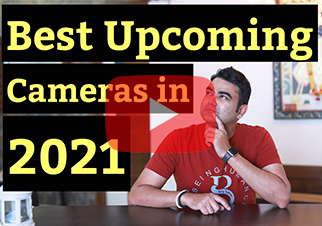
Best Cameras to Buy in 2021: Nikon, Canon, Sony, Fujifilm and more

Asian Photography YouTube Rewind 2020
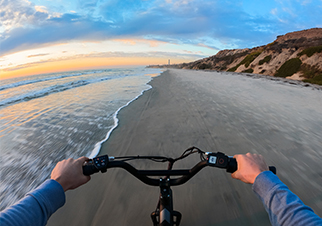
GoPro launches The Remote and announces new firmware update for Hero9 Black
HERO9 Black’s new v1.5 firmware includes:
-
Up to 30% faster wireless transfer of content from the action camera to the GoPro app
-
Developed HyperSmooth 3.0 performance in cold temperatures
-
A slo-mo shortcut slider button
-
Better GPS accuracy
-
Support for live streaming with the Max Lens Mod, bringing Max HyperSmooth and SuperView plus in-camera horizon-lock to live streaming
-
Pro 3.5mm Mic Adapter support for users who want to use external mics in the Media Mod for HERO9 Black
Firmware updates are also available for HERO8 Black and GoPro MAX that increase wireless transfer speeds by up to 15% and 20%, respectively, and provide compatibility with GoPro’s new The Remote.
The Remote is a smartwatch-size accessory that can be fixed on anything from a user’s wrist to a gear strap, handlebar or rollbar. It is rugged and waterproof to 16 feet, features a large status display and glove-friendly buttons. The Remote enables convenient control of the most used camera functions, including powering on and off, mode changing and shutter button control.
The
Remote can control up to five GoPro cameras simultaneously from 200
feet away. And it uses Bluetooth Low Energy for maximum battery life
and easy pairing with your GoPro.
The Remote is compatible with HERO9 Black, HERO8 Black and MAX and is available on GoPro.com for $79.99, or at a 30% discount for GoPro Subscribers. It is currently available in North America only with a worldwide release coming in February 2021.
The HERO9 Black, HERO8 Black and MAX firmware updates are available on GoPro.com and via the GoPro app.

Tamron 70-180mm f/2.8 Di III VXD Lens Review
Fujifilm’s #NeverStop Attitude during tough times
 1.jpg)
The year 2020 has been challenging for the industry to say the least. But while things are starting to look up, every brand is doing their bit to bounce back to normalcy. Undoubtedly, these difficult times require an undying attitude and an appetite to look beyond the usual. Fujifilm believes that they have cracked this code as Haruto Iwata, Managing Director, Fujifilm India spoke to Bhavya Desai about their never stop attitude and more. Excerpts:
2020 has been a challenging year to say the least. How has Fuji as a company and its people coped with the pandemic?
The Covid-19 outbreak has an enormous impact on brands across all industries. From a decrease in the consumer confidence, restricted mobility and loss of jobs, it has caused a recession like situation with subsiding consumerism. At Fujifilm, we aim to create meaningful advancements for our customers and communities by enhancing the quality of life of people worldwide with top priority to ensure the safety and wellbeing of our employees and communities.
To function in the new normal, we have enforced work from home, restriction/limitations on travel, complete sanitization of our offices, hygiene protocols and social distancing norms across our offices in India. Apart from these lucrative steps, we have been continuously initiating health check-ups across cities in India, especially in remote areas and associations with hospitals to drive awareness around the early detection of breast cancer amidst lockdown.
At the community level, we have also introduced various online workshops to help our customers utilise their time and give our business a chance to forge an instant connection with them. While we are embracing a never seen before and lasting impact of Covid-19, it is important for all of us to stay positive and strong for each other.
What has been the overall impact on the business this year and how have you mitigated this challenge?
The occurrence of Covid-19 has changed the face of many industries and led to a stressful time. As we continue to navigate through the global pandemic, our business strategy continues to resonate with our customers as they manage through these unprecedented times.
While the first half of the year was challenging for individuals and businesses alike, we’ve witnessed a swift recovery in our business and a favourable consumer sentiment in the second half.
With rising numbers of customers on the digital bandwagon, the key task at hand for us was to revisit our approach and make them more tech-savvy. We introduced various online workshops for camera enthusiasts with Zack Arias, Daboo Ratnani and Valentina Vee. We even conducted interactive sessions like INSTAX Doodle Art Contest to help our customers utilise their time and give our business a chance to forge an instant connection with them.
At Fujifilm, we have always aimed at creating meaningful advancements and in the last few months, we have taken several measures to ensure safety both internally and externally. In line with our philosophy of ‘Value from Innovation’ and our ‘Never Stop’ attitude, we will continue to showcase our unwavering commitment and never stop building on our innovations and expertise.
What is the future roadmap of the country given the current scenario of the industry?
The pandemic has reshaped the way we live, breathe and conduct business. It has brought the global economy to a complete standstill causing challenges to businesses across sectors. Till a vaccine is found, industries are looking at solutions that can help them bounce back and we have noticed that the role of technology is absolutely critical in making this happen.
For most businesses, the key challenges are travel, fewer staff at offices and factories and lack of face to face communication. Looking at the current scenario, Industry 4.0 technologies can play an important role in the return to normalcy.
How has been the response for Fuji products this year? Can you share the market share across the product segments (eg. mirrorless, medium format, instant cameras)?
The Covid-19 has led to a paradigm shift in consumer behaviour. The way we work, shop and communicate with people has changed more than any other disruption; including technological ones in the recent past. While, it may not be business as usual, but our customers still depend on our products and services at large.
Building onto our customer experience, we virtually launched our flagship camera, the X-T4 in May 2020. Thus, being the first ones in the industry to modify our product launch strategy keeping in mind our community-first approach, especially during these times. We believe that it is all about adapting your product offerings, marketing language and availability according to the business environment. The new additions, have been well received and gave a boost to our festive season sale this year.
Do you feel the strategies (eg. marketing, retail, online) adopted during these times are only isolated to the current scenario or they might get absorbed into regular business?
There is no denying that these are stressful times and the pandemic has changed the face of many industries. With most of the consumers now at home practicing social distancing, their online presence has increased as social media platforms have become the primary means of communication with others. We at Fujifilm are following a similar approach and are using social media platforms like Instagram, Facebook, Twitter, YouTube to disseminate valuable messages to our consumers.
As the community moves beyond the survival mode, we believe that the digital-adoption momentum is likely to carry forward and become permanent. This inflection point is primarily shaped by two major shifts in customer behaviour i.e. the reluctance to mingle in crowded public places and higher propensity for digital adoption.
Marketers across industries are redesigning their business models and the imaging solutions industry is no exception. Consumers are likely to opt for online shopping even after the outbreak ends and this change is being witnessed in the imaging industry as well.

What is the expectation with the new launch of the X-S10?
With the newly launched FUJIFILM X-S10, we wanted to deliver a lightweight mirrorless camera body equipped with state-of-the-art technology to exhibit the best for our photographer community. We will be committed to our endeavours with our motto, NEVER STOP innovating to create new game-changers and contribute to the needs of our customers and partners.
For the X-S10 camera, we will be targetting photography journalists, semi-professionals, and expert photographers. We expect it to be a hit amongst the wedding photographers as well. Given a lot of buzz around the X-S10 camera, we’re confident that this new launch too, will replicate the success of our flagship X-T4 camera, and will garner the desired results for us.
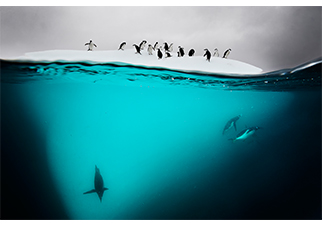
An empty National Park is not Good for Wildlife – Ami Vitale
Apart from being one of the leading Wildlife Photographers globally, over the years Ami Vitale has also taken monumental steps towards wildlife conservation. And with 2020 turning for the worst, she along with her friend Eileen Mignoni decided to start a new initiative ‘Prints for Nature’ to help those who are pushing boundaries in the frontline of the pandemic to help conservation. Bhavya Desai spoke to her to learn more. Excerpts:
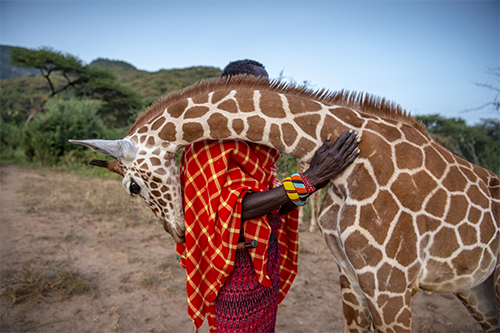
What is the ‘Prints for Nature’ initiative and what was the objective behind it?
‘Prints for Nature’is a fine art photographic print sale, offering collectors the chance to own work from some of the most impactful names in the photography industry and contribute to conservation. This is an independent initiative that includes over 85 renowned Fine Art and Nature Photographers who have generously donated prints for this cause. All of the net proceeds will go directly to support Conservation International’s core initiatives. I saw the need to support communities protecting wild lands and our most vulnerable species, at a time of critical need. The Covid-19 pandemic is devastating conservation efforts globally as tourism and economies have collapsed creating increasing pressure on nature. Driven by this desperation, poaching and deforestation is on the rise,I believed that by coming together, we could make an immediate impact.
In the early days of the pandemic, we were hearing heart-warming stories. It seemed that wildlife was getting a much needed break from humans and that they were thriving in the era of lockdowns. Finally, they were able to roam freely in cities and national parks! Unfortunately, the reality was much different. Tourism has been what has funded major conservation projects around the world, helping to protect wildlife, restore habitats and create awareness. When tourism crashed, so did the much needed protection for the animals and ecosystems. Contrary to popular belief, an empty national park is not a good thing for wildlife. Tourists fund conservation and they also keep poachers away.
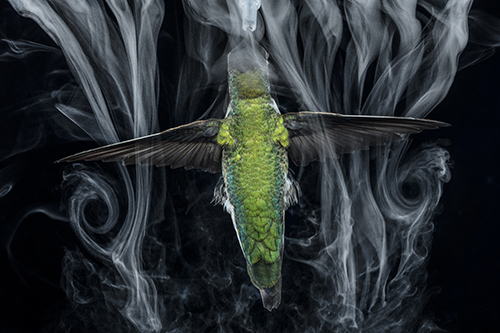
How is this initiative different from your previous efforts?
In the past, I have worked on fundraising efforts on a smaller scale,but this is the first time I’ve organised a group collaborative effort with so many incredibly talented photographers. It’s been a beautiful labour of love. My dear friend and colleague Eileen Mignoni and I have been doing everything from getting sponsorships to reaching out to the photographers, curating the gallery, building the website, working out the kinks, handling customer service, answering all questions that come in and media outreach. I chose Paper and Ink Studio to do all the printing because of the impeccable quality of their work.
How
important is wildlife conservation for nature and for you personally
as well?
Planet Earth is the only home we have and together we have poked some holes in our shared little life raft. I want everyone to experience and benefit from the diversity of habitat and life we have today in all of its forms – from glaciers to deserts, elephants to the tiniest of ants that inhabit the earth. We must not condemn future generations to a world bereft of these experiences.What happens next is in all of our hands. Nature is resilient if we give it a chance – if we give it our time. We all have the capacity to get engaged and use our voices to make a difference. The messenger matters just as much as the message itself. Each of us will be a much more powerful voice when speaking to the people in our lives.
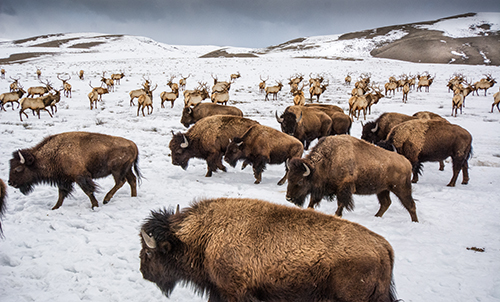
Apart from being such an inspiration to many, you’ve been constantly pushing the conservation boundaries. Where does that innate drive come from?
I believe we must first fall in love with the world around us. Love gives us the courage to make a difference. But I know it’s not just about loving this planet. Infact, that’s not going to save us. What’s going to save us is believing in the wonder of this world. Wonder allows us to go beyond the routine ways of thinking and to reimagine our future together, to reimagine a world graced by all the species that are on the edge of extinction right now.
Wonder shows us how deeply connected we are to one another and that our choices are profound in their impact. We all need to do all we can to care for the plants and critters that inhabit the earth. They are fellow travellers, and our only friends, in this cold dark universe. Our future happiness depends on them. Once you take that brave first step and allow yourself to fall in love, you open yourself to the experience of wonder. It is inexplicable and it changes everything.

Do you feel we are doing enough in this direction or there is still a long road ahead?
Nature
sent us a strong message with this pandemic and reminded us of just
how small and deeply interconnected our world is. It is a powerful
moment to reimagine our relationship to nature and to one another.
We need to reduce human encroachment on wildlife. If we do, we can
minimise
the opportunity for viruses to cross from one species to another;
from animals to humans.
Today,
nearly 1 million species are in danger of extinction. Our own health
and destiny are intricately connected to the natural world and
impacted by the loss of species. My hope is that this pandemic
inspires every human being to understand this important connection.
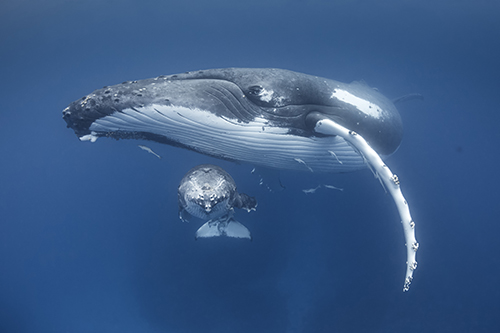
What is your lasting message to all the people who read this?
I think what people need to understand is that tourism is what keeps wildlife alive in many places. When people begin travelling again, we should be travelling responsibly, to destinations that act to sustain wildlife areas, and choosing companies that put money back and are not wholly extractive.
Personally, I believe the pandemic has forced us to see how interconnected we are. While this revelation has been devastating, it’s also shown us how we are able to unite and act as individuals for the collective good. This is a moment when we can look outside ourselves and take individual action for the good of the planet. I am personally thinking about a different approach to my own work and my travel.
Travel is important, but I know that we must change how we travel. We can alleviate some of the environmental stress of travel simply by keeping more of our adventures local. If you do go abroad, rather than trying to see it all, slow down and engage with one place at a time. Instead of travelling to many countries, think about spending time in one place in that same time frame. When we take the time to slow down and truly build real relationships with people and places, an authentic connection is created.


